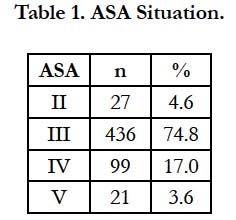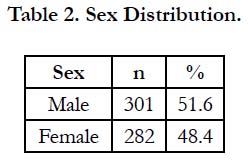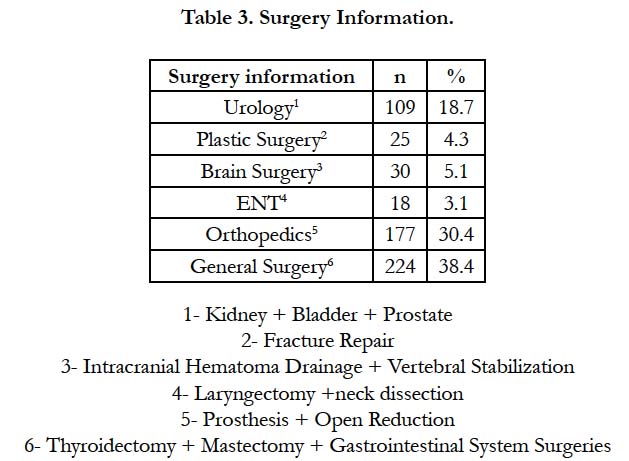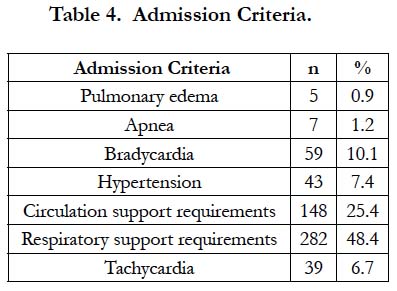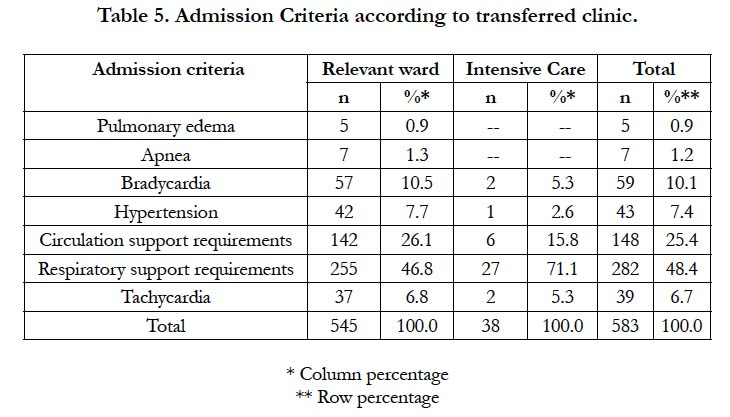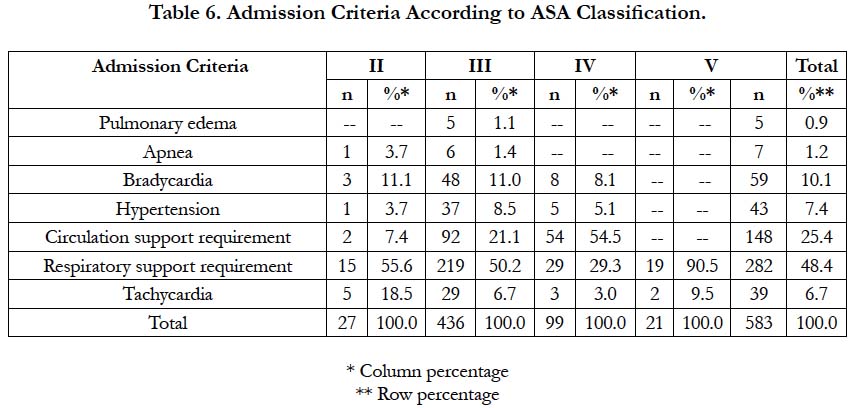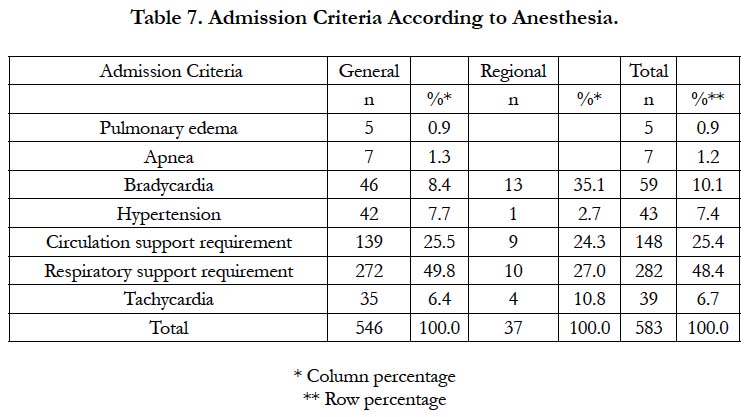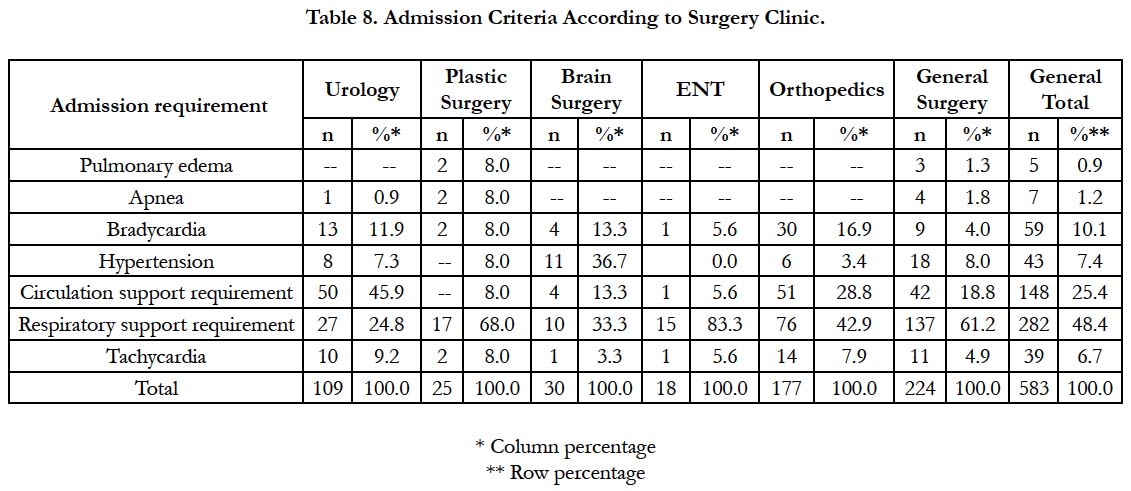Place of the Post-Anesthesia Care Unit in Patient Care after Anesthesia
Güvenç Doğan1*, Çakır E2, Kılıç I2, Akdur F2, Ornek D3, Selçuk Akçaboy ZN3, Nermin G4
1 Hitit University Corum Education and Research Hospital Anesthesiology and Reanimation Clinic, Çorum, Turkey.
2 Ankara Numune Training and Research Hospital, Anesthesiology and Reanimation Clinic, Ankara, Turkey.
3 Associate Professor, Ankara Numune Training and Research Hospital, Anesthesiology and Reanimation Clinic, Ankara, Turkey.
4 Professor, Ankara Numune Training and Research Hospital, Anesthesiology and Reanimation Clinic, Ankara, Turkey.
*Corresponding Author
Guvenc Dogan,
Hitit University Corum Education and Research Hospital,
Anesthesiology and Reanimation Clinic, Çorum, Turkey.
Tel: 05324025208
E-mail: guvencdogan@gmail.com
Received: November 29, 2016; Accepted: January 09, 2017; Published: January 12, 2017
Citation: Güvenç Doğan, Çakır E, Kılıç I, Akdur F, Ornek D, et al., (2017) Place of the Post-Anesthesia Care Unit in Patient Care after Anesthesia. Int J Anesth Res. 5(1), 383-388. doi: http://dx.doi.org/10.19070/2332-2780-1600079
Copyright: Güvenç Doğan© 2017. This is an open-access article distributed under the terms of the Creative Commons Attribution License, which permits unrestricted use, distribution and reproduction in any medium, provided the original author and source are credited.
Abstract
Aim: The aim of this study is to emphasize that the post-anesthesia care unit provides good quality service and is an important
place for treatment of patients at high risk of postoperative complications.
Material And Methods: Patients admitted to the post-anesthesia care unit with ASA II, III, IV, and V risk group during the postoperative period between 1 March 2013 and 30 September 2013 in Ankara Numune Training and Research Hospital were retrospectively evaluated for data relating to age, gender, disease requiring surgery, surgical procedures, and perioperative anesthesia method, admission criteria for postoperative post-anesthesia care unit, duration of stay in post-anesthesia care unit and patient’s follow-up information in the ward.
Results: A total of 583 patients who were admitted to the post-anesthesia care unit between 1 March 2013 and 30 September 2013 in Ankara Numune Training and Research Hospital were evaluated, retrospectively. Of patients 74.8% of in isk group ASA III. The average age was 59.36 years. Of patients 51.6% were male and 48.4% were female. In terms of clinic, 38.4% of the patients were operated by general surgery, 30.4% were operated by the department of orthopedics. General anesthesia was administered to 93.7% of the patients. Of patients, 48.7% had respiratory failure and 25.4% had hypotension. For 98.5% of patients post-anesthesia unit stay was one day and 6.5% of the patients were transferred to the intensive care unit.
Conclusions: We revealed that the majority of PACU admissions were patients undergoing general surgery procedures and the most frequent cause of admission was respiratory failure. This study shows that PACU has a considerably important place in peroperative patient management.
2.Material and Method
3.Results
4.Discussion
5.References
Introduction
Each intervention from outside the body may cause unintended and unwanted situations; in other words “complications”. If the intervention is a surgical procedure, a variety of complications may be encountered during or after the procedure. When surgical procedures on all areas of the body are included, the largest proportion of complications occurring after surgery are reported to be pulmonary complications [1-3]. As a result, patient monitoring in the PACU is very important. In the United States in 1175 malpractice suits related to anesthesia, 7.1% involved PACU incidents [4]. Complications that may cause serious results in the PACU are mainly due to respiratory problems (43%) and cardiovascular events (24%) [5].
The aim of this study was to retrospectively evaluate data from 583 patients admitted to the PACU from 01/03/2013-30/09/2013 to emphasize the importance of the care and patient treatment given to the patient group with high risk factors after anesthesia in the PACU.
Material and Method
The patient data of 583 patients in ASA II, III, IV and V preoperative risk groups according to the American Society of Anesthesiologists physical situation classification admitted to the Ankara Numune Education and Research Hospital Post-Anesthesia Care Unit after a variety of operations from 01/03/2013 to 30/09/2013 were retrospectively evaluated.
The ages, sex, ASA groups, surgical diagnosis, applied surgical procedure, applied anesthetic method, PACU admission criteria, duration of PACU stay, and transfer clinic were recorded for patients admitted to the post anesthesia care unit in the postoperative period from 01/03/2013-30/09/2013 and retrospectively evaluated.
Results
The data belonging to 583 patients admitted to Ankara Numune Education and Research Hospital Post-Anesthesia Care unit in the postoperative period from 01/03/2013 to 30/09/2013 were retrospectively investigated.
The distribution of patients in terms of ASA classification is given in Table 1. In this period the majority of patients admitted to PACU were in ASA III group (74.8%).
The mean age of patients was 59.36 ± 13.75 years. Of patients 51.6% were male and 48.4% were female (Table 2).
The surgical information of patients is given in Table 3. The majority of monitored patients were operated on by general surgery (38.4%) and orthopedic (30.4%) clinics.
Of patients 93.7% had general anesthesia and 6.3% had regional anesthesia.
The admission criteria for patients in the PACU are given in Table 4. The most common reasons were respiratory support (48.4%) and circulation support (25.4%). Apart from these, patients were admitted to the PACU for bradycardia, hypertension, tachycardia, apnea and pulmonary edema.
It was found that 98.5% of patients stayed in the PACU for 1 day. Only 6.5% of patients were transferred to intensive care, the others were sent to their clinics. The admission criteria according to transferred clinic are shown in Table 5. The majority of patients transferred to intensive care (71.1%) were admitted to the PACU for respiratory support.
Table 6 shows the admission criteria according to ASA group. In this study, while the most common criterion for admission to the PACU for ASA II and ASA III patients was respiratory support requirements, for ASA IV patients the most common cause was circulation support requirements.
Table 7 shows the admission criteria according to type of anesthesia. While respiratory support was the cause of admission to PACU for 49.8% of general anesthesia patients, circulation support was the cause for 25.5%. For regional anesthesia patients in PACU, 35.1% were admitted to the PACU for bradycardia.
Table 8 shows the admission criteria according to operating clinic. Admission to the PACU was for respiratory support for 61.2% of general surgery patients and 42.9% of orthopedic clinic patients. This rate was 83.3% for patients of the ear, nose and throat clinic. For brain surgery patients, hypertension was first place as cause for PACU admittance for 36.7% of patients. Admission criteria for urology clinic patients was circulation support for 45.9%, with bradycardia the criteria for 11.9% of urology patients.
Discussion
This study presents a retrospective evaluation of patients admitted to the PACU in a 6 month period from 01/03/2013 to 30/09/2013.
Currently with development of surgical techniques, more major surgeries are performed and with the aid of monitoring and medications anesthesia is administered to high risk patients leading to longer durations spent in the recovery room and the need for close monitoring in PACU. PACU should be close to the surgery, with design, equipment and personnel-to-patient numbers in accordance with standards.
Our hospital has a 7-bed PACU and aims to provide service in accordance with known standards.
In our retrospective evaluation, the mean age of patients admitted to the PACU in a six-month period was 59.6 years with 51.6% male and 48.4% female. When the ASA risk assessment of patients is investigated, the majority were ASA III group patients. The reason for the low percentage of ASA IV and ASA V group patients is thought to be linked to these patients being monitored in the intensive care unit in the postoperative period. The low rate of ASA II group patients was identified to be due to postoperative supportive treatments administered in the PACU with monitoring recommendations sent to the wards with the patients. Nausea, vomiting, pain, agitation, shivering, late waking, hemorrhage and hypothermia are common complications observed after surgery and anesthesia, and the majority are problems that are resolved in the recovery room without requiring the PACU. However, especially for high-risk patients with comorbidity, respiratory and circulation problems require the PACU. A study reported that 43% of patients were taken to the PACU for respiratory problems with 24% taken due to cardiovascular events [19].
Respiratory problems are the most common severe complications encountered in the PACU [20-22]. The majority of these are related to airway obstruction, hypoventilation or hypoxemia. The most important cause of airway obstruction in the early postoperative period is loss of pharyngeal muscle tonus due to sedation. Inhalation and iv anesthetics, neuromuscular blocking medications and lengthened effect of opioids contribute to pharyngeal loss of tonus in PACU patients [9]. Apart from this, airway edema and patients undergoing lenthy procedures in prone or trendelenburg position may cause airway obstruction. In tongue, pharynx and neck procedures, carotid endarterectomy, thyroidectomy, and cervical vertebra procedures, local tissue edema or hematoma may cause airway obstruction [12].
Hypoventilation generally occurs due to residual depressant effects on respiratory mechanics due to anesthetic agents. Additionally, insufficient reversal of residual muscle paralysis, overdose, hypothermia, pharmacological interactions, varied pharmacokinetics and metabolic factors may cause residual muscle paralysis characterized by hypoventilation. Apart from this, patients with underlying respiratory tract diseases may encounter respiratory failure characterized by increased shunting linked to type of surgery, proximity to the diaphragm, position and lack of good treatment for postoperative pain. Though observed less commonly, pulmonary edema, pulmonary emboli, and pneumothroax may require respiratory support [23].
In our study, 50.5% of patients admitted to PACU in a 6 month period were monitored due to requiring respiratory support [24]. Of these 0.9% were admitted to the PACU with acute pulmonary edema, while 1.2% had apnea.
Circulation problems are the second most common complications. The most common circulation problems observed in the PACU are hypotension, hypertension and arrhythmia. The most common reason for circulation support requirements in the PACU is hypovolemia. Insufficient intraoperative fluid replacement, fluid secretion into the third cavity of tissues, wound drainage and peroperative severe hemorrhage are among the most common causes of hypovolemia and hypotension. Hypertension generally occurs due to pain and bladder distension. Additionally postoperative hypertension may be a part of the neuroendocrine response to surgery. In patients with history of systemic hypertension, postoperative hypertension is commonly observed. Apart from these, arrhythmias are another circulation complication. They may be observed due to hypoxemia, acidosis, medication effects, pain and underlying arrhythmias [23].
In a six month period, 49.5% of patients monitored in the PACU were admitted for circulation problems. Of these 10.1% had bradycardia, 7.4% had hypertension, 25.4% had hypotension and 6.7% had tachycardia diagnosis.
It was found that 93.7% of patients were operated under general anesthesia while 6.3% were administered regional anesthesia. While 49% of general anesthesia patients admitted to the PACU required respiratory support, 27% of regional anesthesia patients admitted to the PACU required respiratory support. The observation of respiratory complications at a higher rate in general surgery patients is considered to be due to variations in lung volume linked to respiratory muscle dysfunction because of anesthesia and disruption of chest wall mechanics [19]. Precautions may be taken to reduce the risk of postoperative pulmonary complications. These precautions should begin in the preoperative period and continue through a variety of precautions in the postoperative period. Though high risk patients may be partially identified, as many patients developing postoperative pulmonary complications are not known beforehand, precautions to reduce postoperative pulmonary precautions should be applied to all patients independent of whether they carry risk or not. Though many factors are defined to cause risk of postoperative pulmonary complications, the majority cannot be resolved. However, there are some risk factors that may be removed. One of these factors is smoking. It was proven that patients who stopped smoking 6-8 weeks before orthopedic surgery had reduced requirements for respiratory support in the postoperative period [25]. Though there are no studies showing postoperative pulmonary risk complications reduce after stopping, as it is known that alcohol consumption increases the risk of respiratory complications, stopping intake may reduce the risk. Contrary to this, ASA score and some personal factors like age cannot be changed. To reduce the risk of postoperative pulmonary complications, administering respiratory physiotherapy in the preoperative period has been shown to increase FEV1 (forced expiratory volume 1st gas amount) levels in the postoperative period [26]. However, there is no study showing that this method reduced the incidence of complications. Apart from general precautions, inserting a nasogastric probe to empty the stomach may reduce the chance of postoperative respiratory support by preventing aspiration [27]. In the intraoperative period there are some precautions that may be taken with the aim of reducing postoperative pulmonary complications. Especially to protect against the risk of postoperative pulmonary edema, the anesthesia duration, inspirated oxygen concentration and airway pressure should be kept low [28], and fluid infusion should be limited [29]. The agents used for anesthesia may strengthen airway closure and cause intraoperative atelectasis. Ketamine is the only anesthetic that does not cause intraoperative atelectasis [30].
Postoperative care may reduce the incidence of postoperative pulmonary complications. The effects of anesthesia and surgery on the chest wall and lungs may cause secretion, retention and atelectasis. Deep breathing exercises have been shown to reduce the incidence of postoperative pulmonary complications in those undergoing upper abdominal surgery and coronary artery surgery [32]. When used for the same aim CPAP reduced the incidence of pulmonary complications for those undergoing both thoracic and non-thoracic surgery as shown by a randomized controlled study [33]. There are insufficient studies related to the role of insensitive spirometer. Another important factor that may be effective in reducing the incidence of pulmonary complications in the postoperative period is pain control [34].
While 35.1% of patients administered regional anesthesia admitted to the PACU were admitted for bradycardia, 8.4% of patients administered general anesthesia admitted to the PACU were admitted for bradycardia. The reason for the higher incidence of bradycardia with regional anesthesia may be linked to blockage of preganglionic cardioaccelerator (T1-4) fibers and reduction in venous return and fall in pressure in the right heart [35].
According to reports in the literature, orthopedic surgery and general surgery procedures are correlated with most postoperative complications and patients in these groups have higher rate of stays in the postoperative PACU [4,36]. In our study, the majority of investigated patients were operated by the general surgery (38.4%) and orthopedic (30.4%) clinics. For both these clinics, respiratory support requirements and circulation support requirements were the top two admission criteria. After operations by the urology and orthopedic clinics, nearly 50% of patients were determined to have circulation support requirements as admission criteria for the PACU. In the early postoperative period the most common reason for circulation support requirements was hypovolemia [35]. Generally insufficient replacement of intraoperative fluid losses causes hypovolemia. Hypotension linked to other situations is rarely observed in the early postoperative period. As patients operated in the orthopedic and urology clinics are in the geriatric age group and have major surgical operations, peroperative bleeding is determined to be a significant factor in hypotension.
References
- Van Der Walt JH, Webb RK, Osborne GA, Morgan C, Mackay P (1993) Recovery room incidents in the first 2000 incident reports. Anaesth Intensive Care. 21: 650–2.
- Zelcer J, Wells DG (1987) Anaesthetic related recovery room complications. Anaesth Intensive Care. 15(2): 168–74.
- Hines R, Barasch PG, Watrous G, O’Connor T (1992) Complications occurring in the postanesthesia care unit: a survey. Anesth Analg. 74(4): 503–9.
- Zeitlin GL (1989) Recovery room mishaps in the ASA Closed Claims Study. ASA Newsletter. 53(7): 28–30.
- Bennet-Guerrero E, Welsby I, Dunn TJ, Young LR, Wahl TA, et al., (1999) The use of a postoperative morbidity survey to evaluate patients with prolonged hospitalization after routine, moderate risk, elective surgery. Anesth Analg. 89(2): 514–19.
- Bothner U, Georgieff M, Schwilk B (1999) The impact of minor perioperative anesthesia related incidents, events and complications on postanesthesia care unit utilization. Anesth Analg. 89(2): 506–13.
- McGrath B, Chung F (2003) Postoperative recovery and discharge. Anesthesiol Clin North America. 21(2): 367-86.
- Feeley T, Macario A (2000) The Postanesthesia Care Unit. Miller RD Anesthesia. 5th (Edn), Churchill Livingston: Pennsylvania. 2302-2322.
- Seago JA, Weitz S, Walczak S (1998) Factors influencing stay in the postanesthesia care unit: a prospective analysis. J Clin Anesth. 10(7): 579–87.
- Standards of the American Society of Anesthesiologists. Standards for Postanesthesia Care, Approved by the House of Delegates on Oct. 12, 1988 and last amended on Oct. 27, 2004. American Society of Anesthesiologists.
- American Society of Anesthesiologists Task Force on Postanesthetic Care (2002) Practice guidelines for postanesthetic care (2002) A report by the American Society of Anesthesiologists Task Force on Postanesthetic Care. Anesthesiology. 96(3):742-752.
- Siddiqui N, Teresi J, Arzola C, Fox G (2006) Hypoxemia on arrival to pacu : An observational audit. Can J Anesth. 53(1): 26470.
- Mathes DD, Conaway MR, Ross WT (2001) Ambulatory surgery: Room air versus nasal cannula oxygen during transport after general anesthesia. Anesth Analg. 93(4): 917-921.
- Benumof JL (2001) Obstructive sleep apnea in the adult obese patient: Implications for airway management. Anesth clin North America. 20(4): 789-811.
- Kopman AF, Yee PS, Neuman GG (1997) Relationship of the train-of-four fade ratio to clinical signs and symptoms of residual paralysis in awake volunteers. Anesthesiology. 86(4): 765-771.
- Eriksson LI, Sundman E, Olsson R, Nilsson L, Witt H, et al., (1997) Functional assessment of the pharynx at rest and during swallowing in partially paralyzed humans: Simultaneous videomanometry and mechanomyography of awake human volunteers. Anesthesiology 87(5): 1035-1043.
- Bevan DR (2001) Neuromuscular blockade: Inadvertent extubation of the partially paralyzed patient. Anesthesiol Clin North Am. 19(4): 913-922.
- Kluger MT, Bullock MF (1989) Recovery room incidents: A review of 419 reports from the Anaesthetic Incident Monitoring Study (AIMS). Anaesthesia. 57(11): 1060-1066.
- Wong DH, Weber EC, Schell MJ, Wong AB, Anderson CT, et al., (1995) Factors associated with postoperative pulmonary complications in patients with severe chronic obstructive pulmonary disease. Anesth Analg. 80(2): 276-84.
- Fisher BW, Majumdar SR, McAlister FA (2002) Predicting pulmonary complications aſter nonthoracic surgery: a systematic review of blinded studies. Am J Med. 112(3): 219–225.
- Hall JC, Talala RA, Mander J (1991) A multivariate analysis of the risk of pulmonary complications aſter laparatomy. Chest. 99(4): 923-7.
- Brooks JA, Brunn DNS (1997) Predictors of postoperative pulmonary complications following abdominal surgery. Chest. 111(3): 564-71.
- Lange, Evers AS, Maze M (2004) Anesthetic Pharmacology, Physiologic Principles and Clinical Practice. Churchill Livingstone.
- Hurford WE (2000) The bronchospastic patient. Int Anesthesiol Clin. 38(1): 77-90.
- Møller AM, Villebro N, Pedersen T, Tønnesen H (2002) Effect of preoperative smoking intervention on postoperative complications: a randomised clinical trial. Lancet. 359(9301): 114-7.
- Sekine Y, Chiyo M, Iwata T, Yasufuku K, Furukawa S, et al., (2005) Perioperative rehabilitation and physiotherapy for lung cancer patients with chronic obstructive pulmonary disease. Jpn J Thorac Cardiovasc Surg. 53(5): 237-43.
- Roberts JR, Shyr Y, Christian KR, Drinkwater D, Merrill W (2000) Preemptive gastrointestinal tract management reduces aspiration and respiratory failure aſter thoracic operations. J Thorac Cardiovasc Surg. 119(3): 449-52.
- Grichnik KP, D’Amico TA (2004) Acute lung injury and acute respiratory distress syndrome aſter pulmonary resection. Semin Cardiothorac Vasc Anesth. 8(4): 317–334.
- Berry MF, D’Amico TA (2010) Complications aſter Pulmonary Resection: Lobectomy and Pneumonectomy. Complications in cardiothoracic surgery: Avoidance and treatment. 2nd (Edn), West Sussex: Wiley & Blackwell.
- Hedenstierna G, Edmark L (2005) The effects of anesthesia and muscle paralysis on the respiratory system. Intensive Care Med. 31(10): 1327–1335.
- Berg H, Roed J, Viby-Mogensen J, Mortensen CR, Engbaek J, et al., (1997) Residual neuromuscular block is a risk factor for postoperative pulmonary complications. A prospective, randomised, and blinded study of postoperative pulmonary complications aſter atracurium, vecuronium and pancuronium. Acta Anaesthesiol Scand. 41(9): 1095-1103.
- Westerdahl E, Lindmark B, Eriksson T, Friberg O, Hedenstierna G, et al., (2005) Deep-breathing exercises reduce atelectasis and improve pulmonary function aſter coronary artery bypass surgery. Chest. 128(5): 3482-8.
- Kindgen-Milles D, Müller E, Buhl R, Böhner H, Ritter D, et al., (2005) Nasal-continuous positive airway pressure reduces pulmonary morbidity and length of hospital stay following thoracoabdominal aortic surgery. Chest. 128(2): 821-8.
- Licker M, Spiliopoulos A, Frey JG, Robert J, Höhn L, et al., (2005) Risk factors for early mortality and major complications following pneumonectomy for non-small cell carcinoma of the lung. Chest. 121(6): 1890-7.
- Kayhan Z (2004) clinical anesthesia. 3rd (Edn), Ankara: Logos Publishing, Çankaya. 503-22, 552-70, 694-98.
- Sinclair M, Simmons S, Cyna A (1999) Incidents in obstetric anaesthesia: an analysis of 5000 AIMS reports. Anaesth Intensive Care. 27(3): 275–81.

